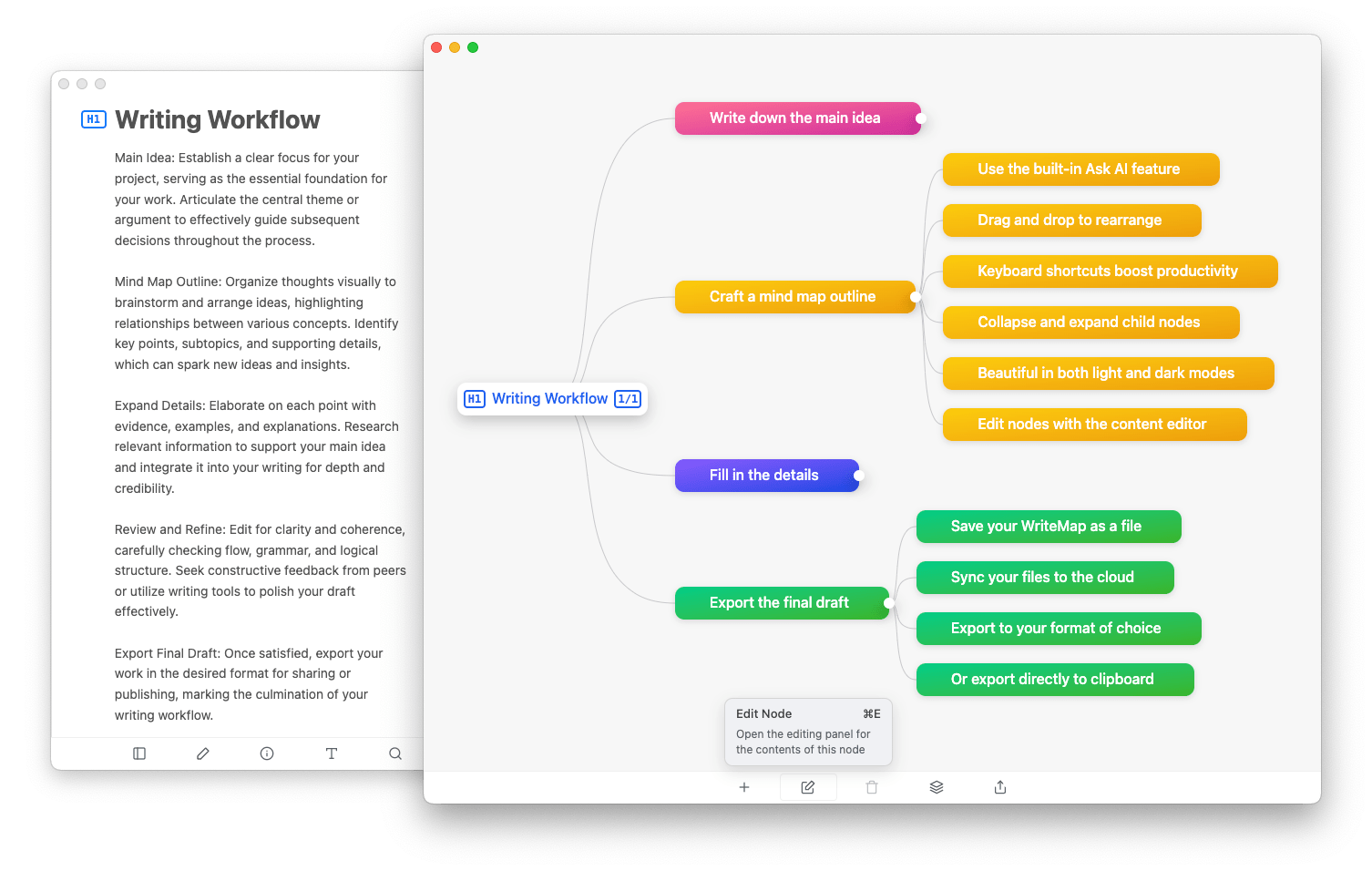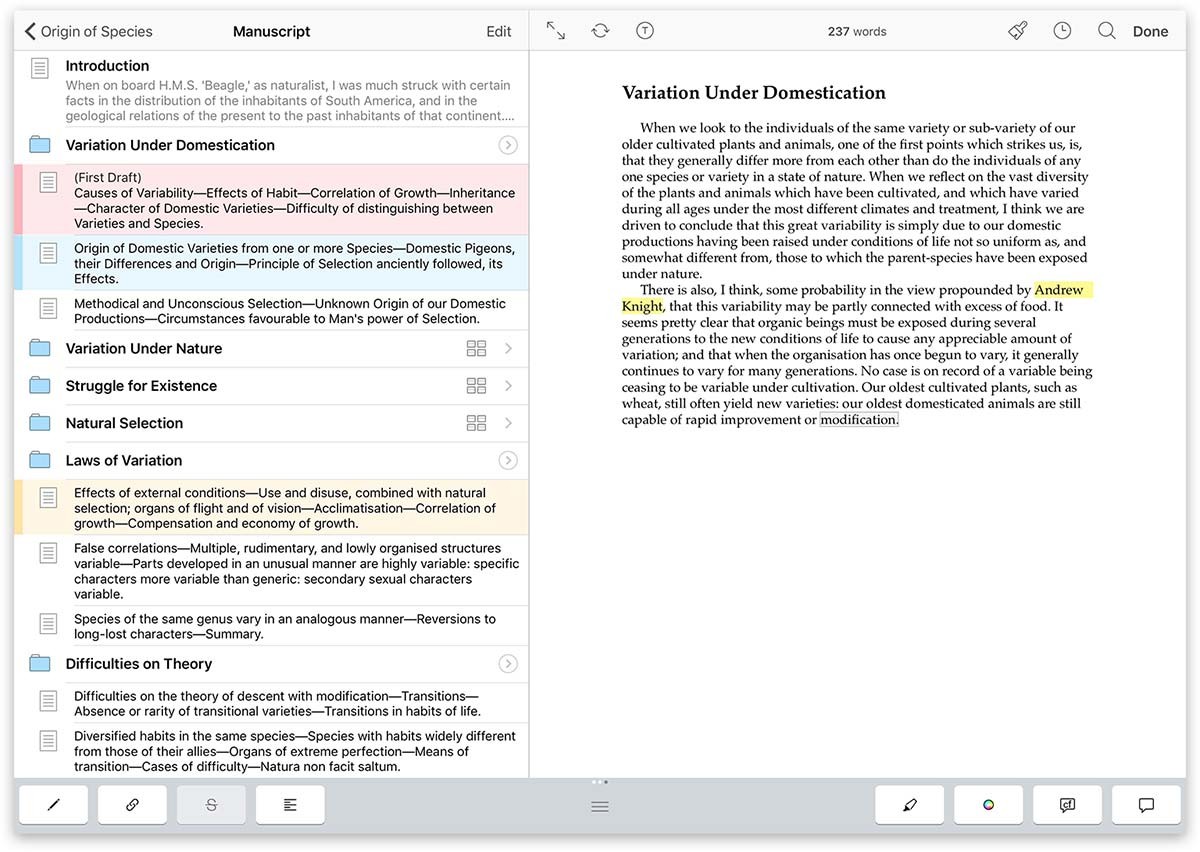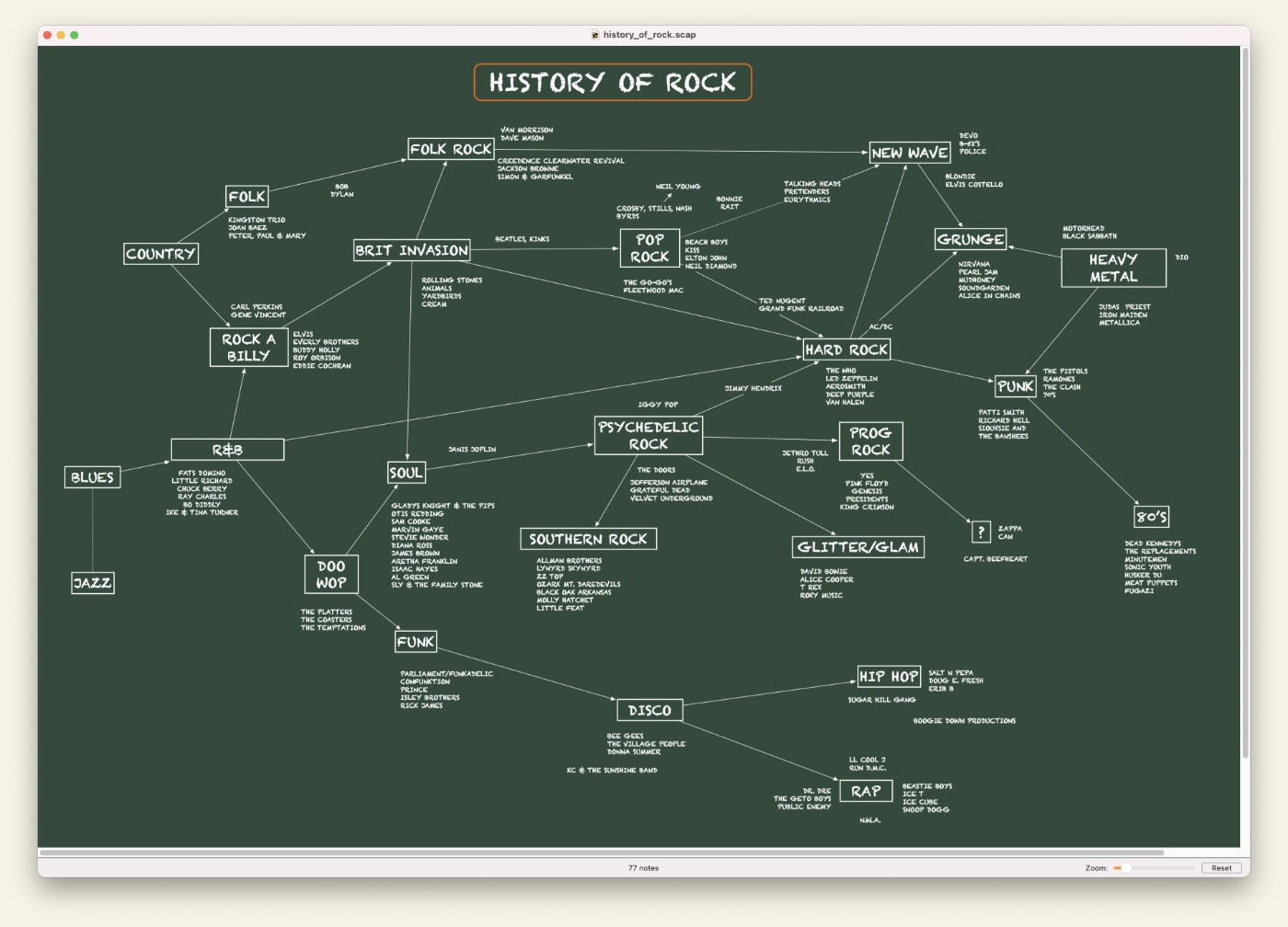
Online Writing Tools: The Best of Visual Mapping and AI
Online Writing Tools: The Best of Visual Mapping and AI
AI has changed everything about what’s possible in online writing tools. As content writers, we’re rethinking how we brainstorm, draft, and polish content—and which writing tools we use. Even though they emerged just a few years ago, AI text tools have found their way into almost every content writer's toolbox. On the other hand, visual tools have been around for dozens of years. Despite their proven benefits and mass availability, visual tools for writers are still underused.
Why use visual tools for writing?
Writing is a linear expression (words read in a particular order to reveal concepts in a linear fashion). The core ideas behind any piece of writing, however, are more complex. And they rarely spring to life in an organized fashion. Whether you’re trying to explain the relationship between subtopics, structure a narrative, or flesh out your research, initial brainstorming includes a lot of information. Mapping lets you capture your thoughts, as they happen.
Once you’ve defined your ideas, it’s time to organize them. Before you compose your first sentence, you need to understand all the ideas you’ve got and—crucially—the relationships these ideas have to each other. Organizing ideas is the start of building coherent arguments or compelling stories.
Visual writing tools (online or otherwise) have one more advantage: they let you quickly see your project as a whole. That kind of bird’s eye view helps you identify gaps, repetition, and opportunities for improvement.
A few online writing tools with mapping capabilities
Here’s a quick roundup of available mapping tools for writers.
WriteMapper
WriteMapper lets you create maps designed to capture hierarchical relationships between ideas. This works well for structured thinkers and topics that demand a clear point-by-point development of your argument. As you’re building your mind map, you can edit nodes to expand on your ideas until you’ve got the start of a draft. For the first seven days, it’s a free online writing tool. After the trial period, users pay once for a lifetime license.

Speare and Airstory for kanban workflows
If you like moving pieces around as your ideas take shape, Speare and Airstory offer kanban-style (or column-based) workspaces. These are like digital corkboards with stickie notes you can move between columns. Each column represents a category you’ve chosen. Rearrange ideas in a column-based layout is particularly useful if you’re working on non-linear narratives or complex articles. Airstory has a free version, while Speare has a limited-time trial followed by a subscription.

Scrivener for books
Scrivener is the OG when it comes to planning and writing book-length work. Its corkboard feature lets you plot out and reorganize large manuscripts easily. Scrivener acts as both a managerial tool and a detailed editor. This desktop app charges a per-license and per-platform fee. So if you work on both a Mac and a PC, you’ll need to pay more.

Scapple for whiteboards
If you like less structure and more fluidity, Scapple is another option. You can jot down ideas and make connections without the constraints of predefined formats. It works best for more abstract thinkers or for the early stages of brainstorming. Because it’s made by Literature and Latte—the same company that makes Scrivener—you can drag your notes directly into Scrivener.

So why does “online writing tools” usually refer exclusively to text tools?
When content writers who use AI are surveyed, they overwhelmingly say that they use text-based writing tools like Chat GPT or Claude. These text-only tools seemed like a miracle when they first launched. And they’re great for a number of uses: boosting productivity, pair writing, and text generation.
For many writers, the call of effortless, fast writing help overshadows the more nuanced advantages offered by visual tools.
Writers fear that visual tools take longer to learn and do not reduce the effort enough
From setting up the software to finding your personal workflow, there’s a learning curve for visual tools. In a world that thrives on tight deadlines and exponential content demands, not every writer wants to climb that curve.
AI writing tools online promise an effortless journey from idea to finished paragraph with a few clicks. If you spend less time agonizing over structure, diction, or flow, the thinking goes, you’ll have more time for polishing near-ready drafts.
But there’s a trade-off. Text-based AI tools reduce effort, but they often sacrifice the deeper engagement that visual tools encourage. Time spent understanding your topic and the relationships between ideas helps generate new ideas and novel connections. So how do we bridge that gap?
There is hope: visual and text-based tools, together at last
Fortunately, content writers don’t have to choose between visual mapping and text-based AI tools. The best writing platforms combine visual and generative features, so there’s no need to sacrifice efficiency for strategic organization. By using a combined tool, AI helps you with all the stages of the writing process: brainstorming, research, structure, organization, outlines, and drafts.
This balanced approach—a symbiosis of visual and AI tools that delivers the best of both worlds—is in its infancy. WriteMapper is headed in this direction with AI helping to branch out its mind maps, but some tools have already pulled ahead in their expansive vision.
Contextminds leads the way
Contextminds combines the power of visual writing tools with the generative capabilities of AI. It lets content creators do a deep dive: exploring and researching ideas while using AI to enrich the writing process at every step.

Brainstorm, gather, and organize your ideas
At its core, Contextminds offers a robust whiteboard feature similar to Scapple. The whiteboard is an open, flexible space for capturing and expanding ideas. Writers can visually map out their thoughts, draw connections between concepts, and rearrange items like topics, questions, keywords, or headings as they see fit.
Find the connections, and make new ones
Contextminds doesn't stop at visualization—it seamlessly incorporates an AI assistant into the mix. This assistant functions as co-writer, offering suggestions, generating content, and proposing new ideas in response to what’s already on the board.
This partnership between humans and AI enhances the brainstorming process, ensuring that writers are never working alone. AI suggestions broaden a writer’s perspective by offering alternative angles, filling information gaps, and ensuring that no stone is left unturned. Rather than replace writers, it enhances their craft and helps them create comprehensive, insightful content.
Contextminds: AI that empowers, not replaces, writers
Maybe the most important effect of Contextminds is how it positions AI to empower, rather than replace, human creativity. AI acts as a collaborator that enhances the writer’s natural abilities rather than overshadowing them. This is a vital distinction in an era where people are worried about AI replacing human jobs.
By combining the exploratory power of visual tools with AI assistance, Contextminds encourages writers to craft with confidence, knowing they have the support of insightful technology. It promotes a balance, where technology enriches human ingenuity rather than diluting it.
To embrace visualization in writing is to acknowledge the multifaceted nature of the creative process. It’s about allowing ideas the space they need to breathe and grow, without sacrificing efficiency. Contextminds and tools like it offer a modern and innovative solution: the meeting point between structured planning and flexible creativity.
Table of contents
Start a free 14-day
trial today — no strings attached!
Unlimited maps & topic suggestions to fuel your content creativity.
1 workspace so that you can easily share your maps
1k GPT credits, 1k keywords and 6k web results to power up your content ideation.
Request a demo
Learn to use AI for SEO topic ideas
See tips and tricks to make you a power user
Understand Contextmind's plans, pricing, and ROI



